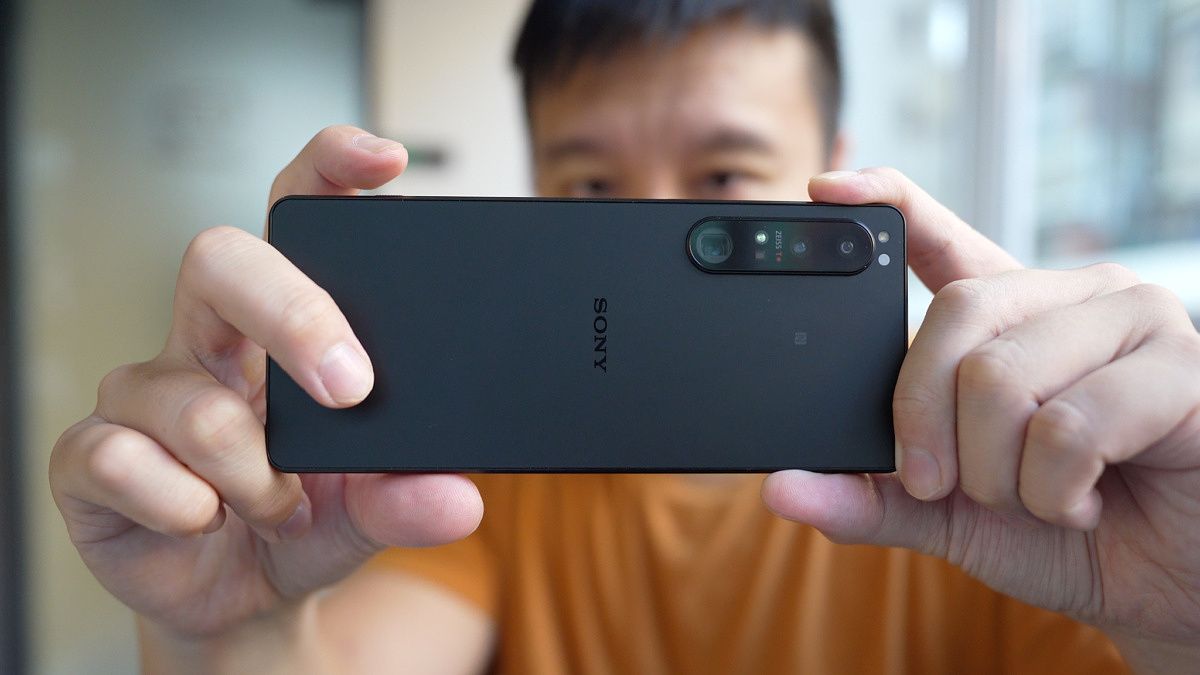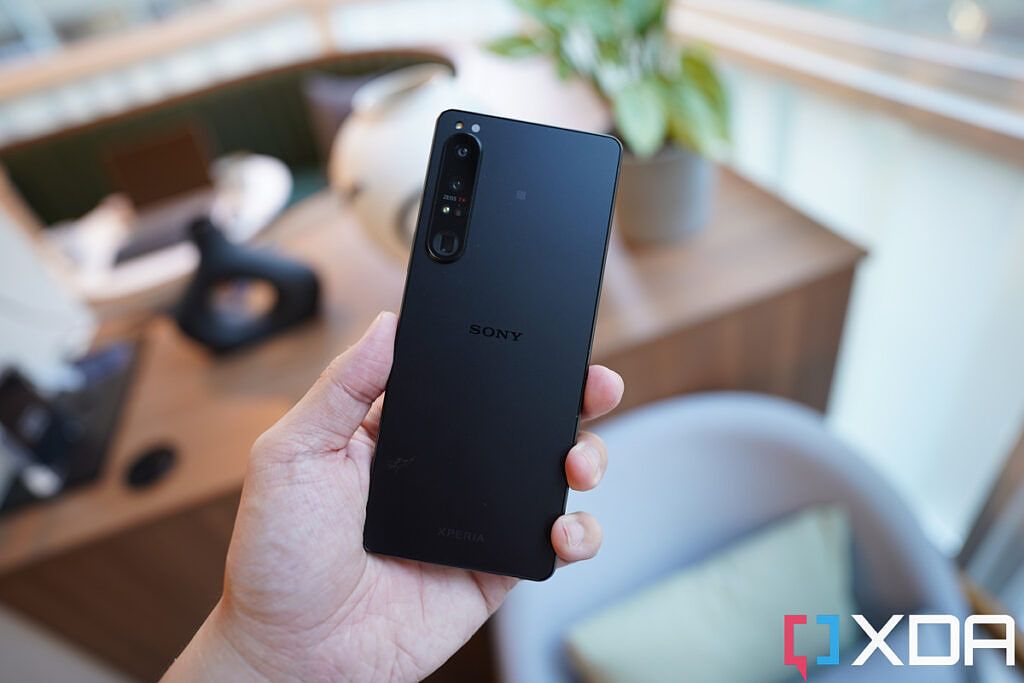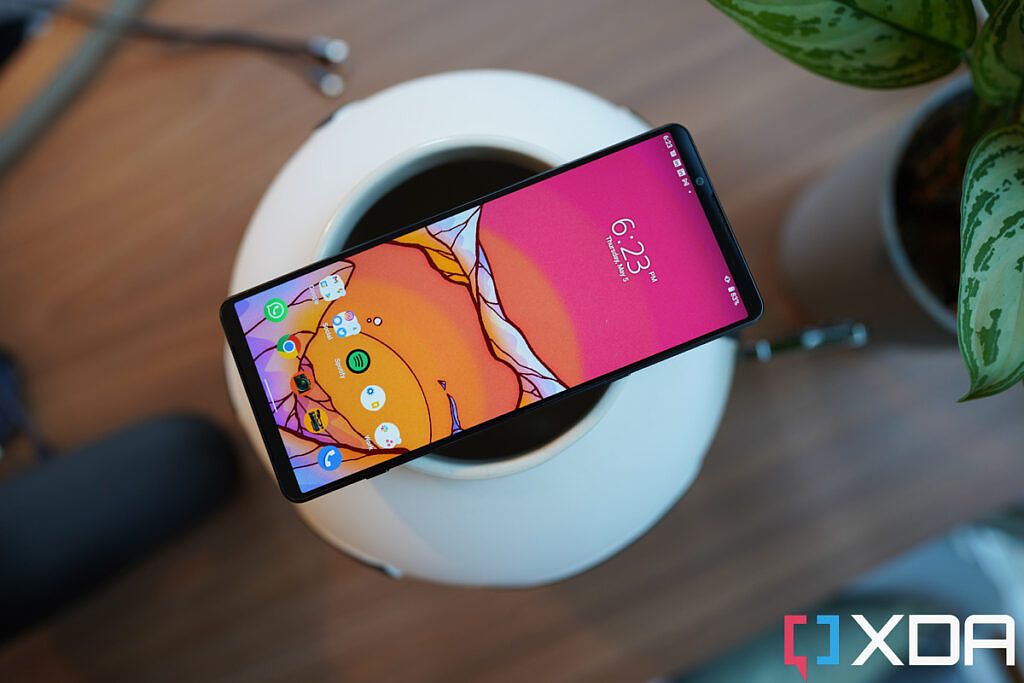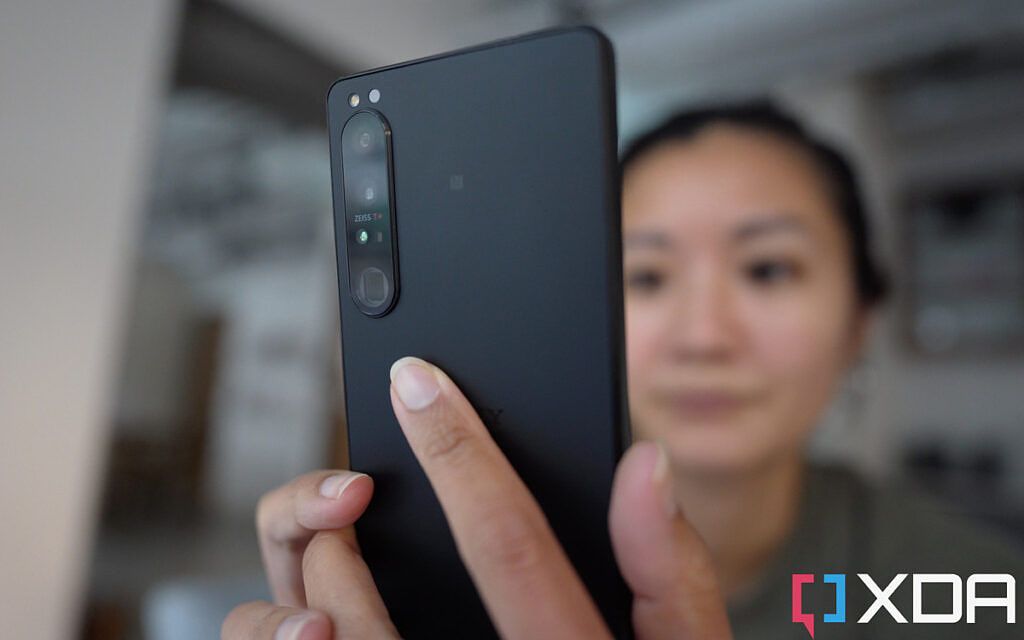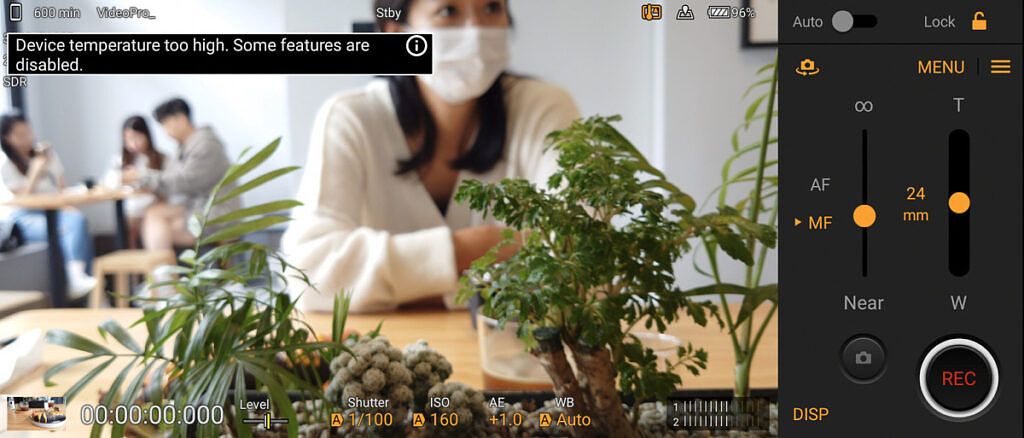Sony's smartphones have always differed from other handsets on the market, in that they never seemed to care about industry trends. This could be something as superficial as bezel sizes -- Sony has never bothered to chase the all-screen look the way other Android brands have -- to something as crucial as digital imaging philosophies. While every other phone brand has been touting their computational photography prowess -- the idea that their phones' AI is so smart at analyzing scenes it can practically take the photo for you -- Sony's doubled down on giving users more manual controls over its smartphone camera. In fact, Sony invited the engineers of its popular Alpha camera line to develop the camera system of last year's Xperia 1 III (pronounced Xperia One mark three), which became a cult hit among camera enthusiasts.
Now comes the Xperia 1 IV (mark four), an iterative update on the mark three that continues the manual camera approach with more "real camera" features like real-time eye autofocus (a Sony camera specialty), burst shooting mode that can snap up to 20 shots in a second, and the ability to shoot 4K/120fps videos on every rear-facing lens. But perhaps more importantly, Sony also polished other things to make the Xperia 1 IV less of a hardcore niche device. This includes a smarter, easier-to-use basic camera mode for those who do want to just point and shoot, and a significantly larger battery to power that gorgeous (and overkill) 4k/120Hz OLED display.
Make no mistake, the Xperia 1 IV is still a very niche phone mostly catering to fans of Sony's Alpha cameras. But at least it's now quite usable for an average joe too.
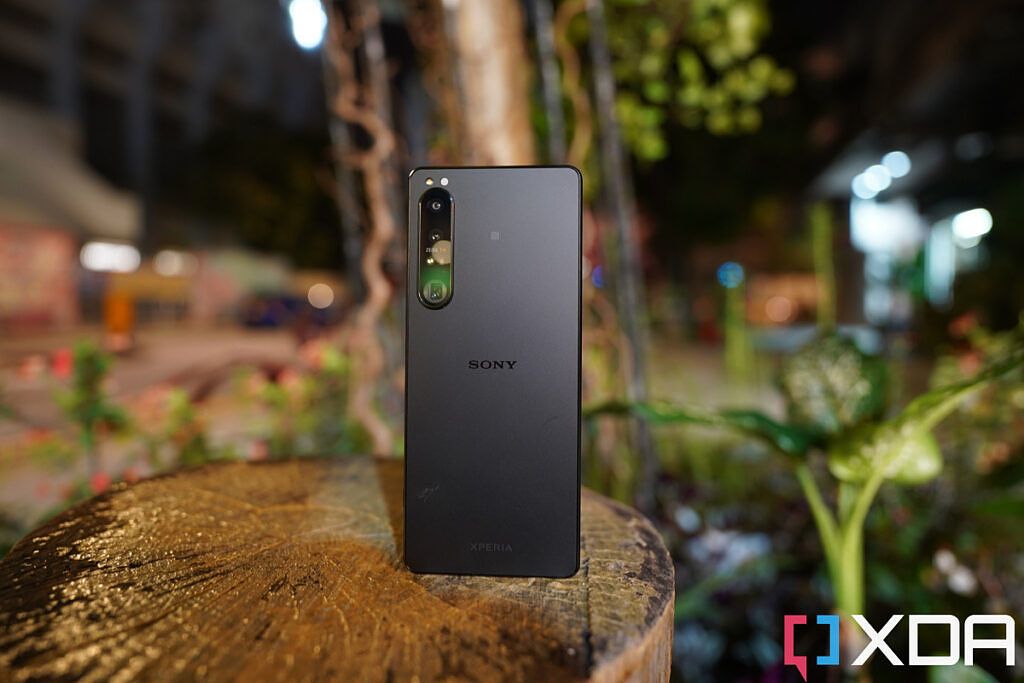
Sony Xperia 1 IV
Sony's new Xperia 1 IV is an iterative update on last year's cult-favorite Xperia 1 III, so you get the same 4K, 120Hz OLED screen along with a triple-lens camera system that strives to offer more manual controls. There are improvements here obviously: including an improved zoom lens.
Sony Xperia 1 IV: Specifications
|
Specs |
Sony Xperia 1 IV |
|---|---|
|
Build |
|
|
Dimensions & Weight |
165mm x 71mm x 8.2mm, 191g |
|
Display |
|
|
SoC |
|
|
RAM & Storage |
|
|
Battery & Charging |
|
|
Security |
|
|
Rear Cameras |
|
|
Front Camera |
12MP |
|
Port |
|
|
Audio & Vibration |
|
|
Connectivity |
|
|
Software |
Android 12 |
About this review: This review was written after two weeks of testing a Sony Xperia 1 IV provided by Sony Hong Kong. Sony did not have any input in this review.
Sony Xperia 1 IV: Hardware and Design
The new Xperia 1 IV looks just about identical to the Xperia 1 III, with the only differences being the removal of a physical button that was used to launch the Google Assistant last year, and the relocation of the SIM tray to the bottom of the new model. This means the new phone is still a rectangular glass-and-metal slab that's a bit blocky and elongated than most phones on the market. Sony's decision to use a 21:9 aspect ratio is meant to cater to fans of cinematic videos -- when held sideways, the screen is perfect for widescreen content -- but it also makes the phone easier to hold because it's not as wide from left to right.
That 6.5-inch, 4K 120Hz OLED screen introduced in last year's Xperia 1 III returns, but it's noticeably brighter. Sony did not reveal numbers, but it's a big improvement over last year's somewhat mediocre brightness level. And while it still doesn't come close to Galaxy S22 Ultra levels bright, it's now more than usable even outside on sunny days. It's certainly better than the Pixel 6 Pro's screen brightness.
I have gone on record before saying 4K resolution on a smartphone display is pointless, and I stand by this. Sure, this screen is razor-sharp, but so are the 1440p screens in a half dozen other flagships that I've tested in the past few months. The wild thing is, Sony doesn't give you the option to manually lower resolution, and the refresh rate is either 120Hz or 60Hz. So yes, this screen is a battery hog.
Sony answered the battery issue this year with a 5,000mAh battery, and while it improves battery life over last year's 4,500mAh cell, it's still not quite enough. It can be an all-day phone if you have a light day, but on heavy days you will need to top up before your night ends -- more on this in the performance section later.
The screen is sandwiched by noticeable bezels, and I don't mind them too much -- they're symmetrical and they house very good front-facing stereo speakers. Yes, this phone is a very good on-the-go NetFlix machine thanks to its relatively light 191g, widescreen that eliminates letterboxing for many movies, and front-facing speakers. There's also a headphone jack if you want to plug in high-end headphones.
On the right side of the device sits the power button that doubles as a fingerprint scanner, volume rocker, and a textured physical button that is meant to be used as a camera shutter in not one, but two camera apps that come with the phone. The button has some travel, allowing it to begin autofocus when pressed halfway (just like in Sony cameras). A full press, of course, snaps the photo.
The phone is powered by the Snapdragon 8 Gen 1 as expected, with 12GB of RAM and 256GB or 512GB of storage. There's also wireless charging and an IP68 rating for water and dust resistance.
Sony Xperia 1 IV: Cameras
The Sony Xperia 1 IV features a triple 12MP camera system covering the wide (24mm), ultra-wide (16mm), and a variable portrait zoom lens that can vary its optical zoom length between 85mm (or around 3.5x) to 125mm (5.2x). This latter lens is unique, as it's a periscope zoom lens with a physical moving lens inside that, as far as I know, only Sony is doing. Last year's Xperia 1 III used a similar technology already, but that lens could only jump between two set optical zoom ranges. This year, the range is fluid, meaning the zoom lens is producing optical zoom anywhere between the 3.5x to 5.2x distance. There's also a TOF sensor which helps with additional depth mapping.
If you're new to Sony's smartphone cameras, you need to know that Sony approaches mobile photography differently from other brands. Essentially, Sony wants you to take photos the way you would with a real camera. For example, most photographers know that you should avoid shooting against a backlight (directly against the sun or facing a window that's letting in a lot of light) because it will result in an unbalanced shot with overly strong contrast. Real cameras will either properly expose the light source and leave the rest of the frame drenched in shadows, or try to expose the darkened area; though, as a result, completely blow out the light source.
Recent smartphone cameras, using computational photography tricks like multi-stack HDR, have managed to throw that conventional wisdom out the window. You can point your iPhone or Pixel directly against the backlight and shoot, and the phones should produce a shot that's evenly illuminated (or at least supposed to, because from my testing, the iPhone 13 Pro/Pro Max actually fails at this sometimes). This is great for most people, who no longer have to worry about lighting when shooting, but sometimes a phone whose HDR is too crazy good (like the Vivo X70 Pro Plus) will produce shots that look a bit unrealistic, almost like there's been editing work done -- because there was, by the phone's ISP.
In the below photos, shot against the harshest light source in the world, Sony's shots blow out the sky and leave anything ground level covered in shadows, leaving some parts in darkness. The iPhone 13 Pro and Vivo X70 Pro Plus, by comparison, produced a shot that better exposes everything. I think most people would agree the Apple and Vivo shots are "better", but those Apple and Vivo shots are also unrealistic. Sony's shots are closer to how the scene looked to my eyes.
Here's the thing: if a real photographer holding a real camera has decided to snap this photo, they have made a conscious decision to shoot a very contrasty shot with extreme shadows and highlights. In a way, Apple and Vivo manufacturing a bluer sky and brightening up shadows go against what would have been a photographer's intent. That's Sony's idea with its mobile cameras: don't just mindlessly point and shoot; instead, have intention with your shots.
Sony approaches mobile photography differently from other brands. Essentially, Sony wants you to take photos the way you would with a real camera
In less harsh conditions, the Xperia 1 IV photos will still leave more shadows in the shot, still won't artificially brighten up scenes like every other smartphone, and usually, it works quite well. In the below set, we can see part of Sony's shot is noticeably darker than the other two shots. The iPhone 13 Pro's shot is very bright and exhibits major digital sharpening -- look at the hard, deep lines on the Buddha statue compared to the other two shots. Personally, I think Apple's shot looks terribly unnatural. Vivo's shot, unsurprisingly to me, is perhaps the most balanced and aesthetically pleasing of the three -- it's illuminated a bit more than the scene at the time, and there's an extra punch to the green leaves. But it's also not as natural. Sony's shot is the most accurate depiction of the scene at the time to my eyes, and the contrast of the left frame covered in shadows better conveyed the mood of the scene at the time.
All the above Sony shots were captured in manual mode. If I switched to auto mode and let Sony's brains help me fix lighting and exposure, the results are quite good. This is a change from previous Xperia phones, whose auto modes were simply not up to par. Below are more shots captured in auto mode by the Xperia 1 IV's main camera.
As mentioned at the beginning of the review, the Xperia 1 IV has three camera features that Sony is very proud of:
- Automatic eye autofocus, meaning the phone will detect most mammals' eyes and lock onto one of them for focus in photos and videos
- Burst shooting mode for snapping up to 20 shots in one second
- 4K 120fps video recording, which is used mostly for slow-motion videos
All these features are supported on every lens in the rear-facing main system. They all work as advertised. Eye autofocus kicks in automatically whether I'm using the wide or telephoto lenses, and it works on humans, cats, and dogs from my testing.
Burst shooting mode is great for those who want to shoot fast-moving scenes like sports or moving animals. In the below screenshots, you can see I was able to capture burst photos of a cat in the middle of a stretch, or a man shooting a basketball. If I cycle through the photos in rapid succession, they look like animations.
The ability to snap rapid-fire burst shots with zoom lenses has allowed me to grab some great shots that a slower phone may not have been able to get. The below zoom shots were captured while I was in a moving bus on a highway.
While Sony is keen to market its variable optical zoom lens, the reality is the quality is pretty good but not great -- definitely not Galaxy S22 Ultra level. But still, it's a better zoom lens than a phone without a Periscope lens, like an iPhone 13 Pro.
The ultra-wide camera is fine in good lighting conditions but at night produces images that are a bit soft on details.
The Xperia 1 IV's camera app can be used in automatic point-and-shoot mode, but most enthusiasts will want to switch over to manual mode, which offers granular control with a UI similar to Sony's Alpha cameras. Here, you can tweak ISO, shutter speed, and white balance, as well as use a histogram to gauge exposure levels.
With a few tweaks, you can produce drastically different shots of the same scene.
That same total control over the camera carries over to videography too -- I can pull off cinematic tricks like "rack focus" using the manual focus dial, zooming in and out is smoother than in most Android phones, but most importantly, 4K 120fps slow-motion videos look great.
Overall, I really enjoyed using the Sony Xperia 1 IV's camera system. I am no professional photographer, but I do own two Sony Alpha cameras for work purposes, so I'd say I produce photos and videos at a semi-pro level. I respect the Xperia 1 IV for not going the same route as all the other phone brands and trying to stick to the basic principles of photography. Having a physical shutter button and a camera UI that offers more controls makes me want to snap photos even more than I already do.
Having a physical shutter button and a camera UI that offers more controls makes me want to snap photos even more than I already do
I find myself constantly walking around the city holding the phone sideways, with a finger on the shutter button, ready to burst fire at any interesting thing I may encounter. Now, are the photos the best-looking photos? Not necessarily, but they at least have a distinct vibe to them, instead of looking like the overly punchy, perfect HDR Google Pixel look.
Sony Xperia 1 IV: Software
The Xperia 1 IV runs Android 12 with Sony's very light Android skin on top. The phone UI basically behaves like stock Android with a notification panel that looks very similar to the Pixel 6 Pro's. The most notable addition is "Side Sense," a sidebar located at the edge of the screen that can be triggered by double taps or swipes. Depending on the trigger action, it will launch a floating menu hosting often used apps, or launch app pairs in split-screen mode. Thanks to the 21:9 aspect ratio, two apps can open in a split-screen mode in symmetrical squares. Many apps, including key ones I use daily like WhatsApp and Slack, can also open in floating window mode.
Animations are fluid, and the shutter button can be assigned to quick launch an app when long-pressed at the homescreen. For the most part, I have no gripes with this software. If I must nitpick: the floating window options have slight stutters when being moved around the screen, it's not as fluid as Samsung's or OPPO's implementation.
Sony Xperia 1 IV: General performance and battery life
With a Snapdragon 8 Gen 1, the phone performs at a flagship level for most tasks. However, the phone is more susceptible to overheating than other phones, likely due to the combination of the 4k screen and robust camera hardware. I actually don't notice the thermal issue when using the phone normally or even gaming. Instead, it's when I'm recording videos. On occasions during hot days, I'll get a pop-up notification warning me the phone is overheating. Still, despite the pop-up message, I was still able to film with the phone without issues for another few minutes before the phone kicks me out of the video app.
The Xperia 1 IV is a great Netflix watching machine thanks to its front-facing speakers and widscreen aspect ratio
As mentioned, the Xperia 1 IV is a very good Netflix watching machine because of its front-facing speakers and the wider screen eliminating most letterboxing from movies. Battery life, also as mentioned, is just okay. On a very heavy use day, like last Saturday when I took the phone out for a filming session, the battery drained from 100% to 20% in six hours. On a moderate use day, like the next day when I also took the phone out all Sunday but didn't shoot as many photos and videos, then the Xperia 1 IV lasted me a solid 10 hours before the battery dipped below 10%. On light usage days, like a weekday when I'm mostly tied to a desk on the computer, then the Xperia 1 IV can make it to the end of a 12, 13-hour day with over a quarter of battery left. Basically, if you take the phone out on weekends, be prepared to charge it before your evening ends.
Should you buy the Sony Xperia 1 IV?
In a sea of similar-looking and feeling smartphones, I have a natural respect and fondness for Sony for thinking outside the box, for sticking to its guns, for zigging where others zag. To be honest, I still think something like the Google Pixel 6 Pro or the Vivo X70 Pro Plus can grab a better shot most of the time, but I like that the Xperia 1 IV challenges me to make the adjustments needed to find better exposure in a shot. But in between the still sub-par battery life (caused by the unnecessary 4K display), thermal issues, and a very high $1600 retail price, the Xperia 1 IV is hard to recommend to anyone but enthusiasts.
The price has rightfully garnered some scoff from those who follow smartphone news, but honestly, people into cameras won't be deterred by the price, because camera gear is expensive. My 20mm lens for my Sony camera alone is $1,200. A brand name Manfrotto tripod can easily go for $800. A camera bag, $300. To that group, $1600 for a phone isn't high. But that group is a niche, and the Xperia 1 IV is a niche phone.
You should buy the Xperia 1 IV if:
- You want a different, more manual, smartphone camera system
- You take a lot of action photos and could use a burst shooting mode
- You want a phone that's different from the pack
- You want a headphone jack and front facing speakers from a top tier flagship that isn't styled as a gaming smartphone
You should not buy the Xperia 1 IV if:
- You want top-notch computational photography with things like dynamic HDR and really good night modes
- You want/need all-day battery life
- You care about getting a good "conventional" value on your smartphone purchase

Sony Xperia 1 IV
The Sony Xperia 1 IV brings a 4k, 120Hz OLED screen, a triple lens system with Sony's trademark eye autofocus and burst shooting mode, as well as ability to shoot 4K 120fps video.

